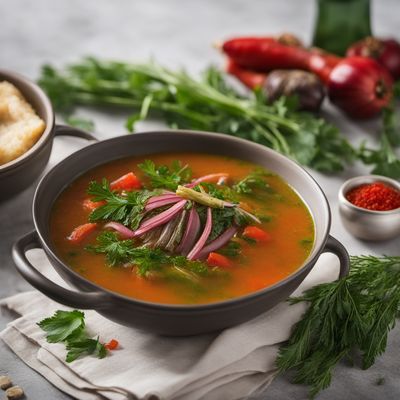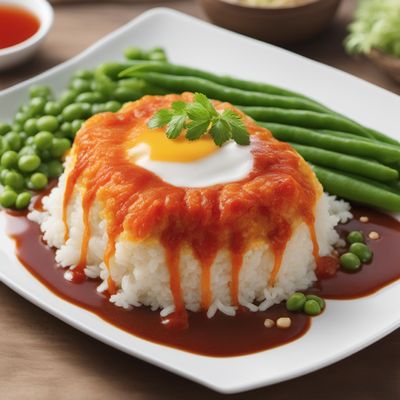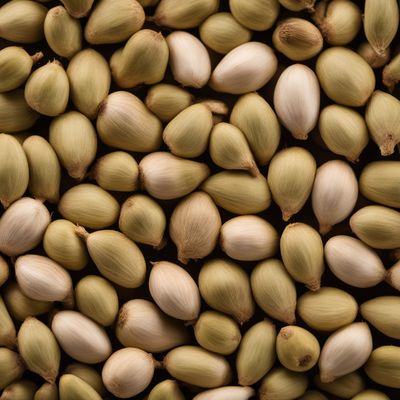
Ingredient
Soyabeans and similar-
The Protein Powerhouse: Soybeans
Soybeans are small, oval-shaped legumes with a smooth texture and a mild, nutty flavor. They are commonly used in the production of soy milk, tofu, and other soy-based products. Soybeans can be consumed in their whole form, cooked, or processed into various forms like soy sauce and tempeh. They are typically light yellow or green in color and have a firm yet tender texture when cooked.
Origins and history
Soybeans have a long history and are believed to have originated in East Asia, particularly in China. They have been cultivated for over 5,000 years and have played a significant role in Asian cuisines. Soybeans were introduced to the Western world in the 18th century and have since gained popularity as a source of plant-based protein.
Nutritional information
Soybeans are a rich source of plant-based protein, fiber, and essential nutrients. They are low in saturated fat and cholesterol and contain beneficial compounds like isoflavones. A 1-cup (172g) serving of cooked soybeans provides approximately 298 calories, 29 grams of protein, and 17 grams of fiber.
Allergens
Soybeans and soy-based products are known allergens and may cause allergic reactions in individuals with soy allergies. It is important to read food labels carefully and avoid consuming soy products if allergic.
How to select
When selecting soybeans, look for plump, firm beans with a smooth surface. Avoid beans that are discolored, shriveled, or have a musty odor. If purchasing dried soybeans, ensure they are free from moisture and insect damage.
Storage recommendations
To maintain the freshness of soybeans, store them in a cool, dry place in an airtight container. Cooked soybeans can be stored in the refrigerator for up to 3-4 days. If freezing, blanch the soybeans before storing them in airtight freezer bags for up to 6 months.
How to produce
Soybeans can be grown in a home garden by planting soybean seeds in well-drained soil and providing adequate sunlight and water. They require warm temperatures to thrive and can be harvested when the pods are fully mature and the beans are firm.
Preparation tips
Soybeans can be used in a variety of dishes and cuisines. They can be boiled and added to salads, stir-fries, or soups. Soybeans can also be processed into soy milk, tofu, tempeh, or used as a meat substitute in vegetarian and vegan recipes.
Culinary uses
Soybeans are widely used in Asian cuisines, particularly in dishes like tofu stir-fry, miso soup, and soy sauce-based dishes. They are also popular in vegetarian and vegan recipes as a source of plant-based protein.
Availability
Soybeans are cultivated and consumed in many countries around the world, including China, Japan, Indonesia, the United States, and Brazil.
More ingredients from this category
Recipes using Soyabeans and similar- » Browse all

Moldovan-inspired Eshkeneh Soup
Savory Moldovan Spinach and Herb Soup

Omurice with a Twist
Savory Egg-Topped Rice Delight

Creamy Mushroom Soup
Velvety Delight: Croatian Creamy Mushroom Soup

Risotto al Salto with Herbed Parmesan Crust
Crispy Parmesan Risotto Pancake with Fragrant Herbs

Papua New Guinean Inspired Vegetable Terrine
Harmony of Fresh Garden Vegetables: Papua New Guinean Terrine

New York City Style Garlic and Oil Spaghetti
Big Apple Spaghetti Delight

Belarusian-style Fasting Rice
Hearty Belarusian Fasting Rice: A Nutritious Delight

Ionian Island Yuca Fritters
Crispy Yuca Fritters with a Mediterranean Twist

Pizza Boscaiola with a Twist
Savory Mushroom and Sausage Pizza Delight

Kazakh-style Foie Gras Terrine
Luxurious Kazakh Delight: Foie Gras Terrine with a Local Twist

Maznik - Bulgarian Cheese Pastry
Savory Delight: Bulgarian Cheese Pastry with a Flaky Twist

Boşnak Böreği with Spinach and Feta Cheese
Savory Spinach and Feta Böreği: A Balkan Delight

